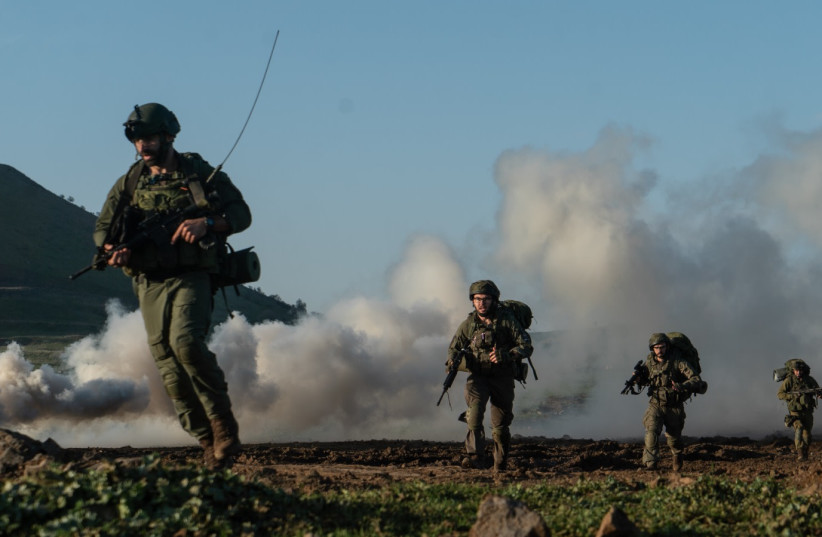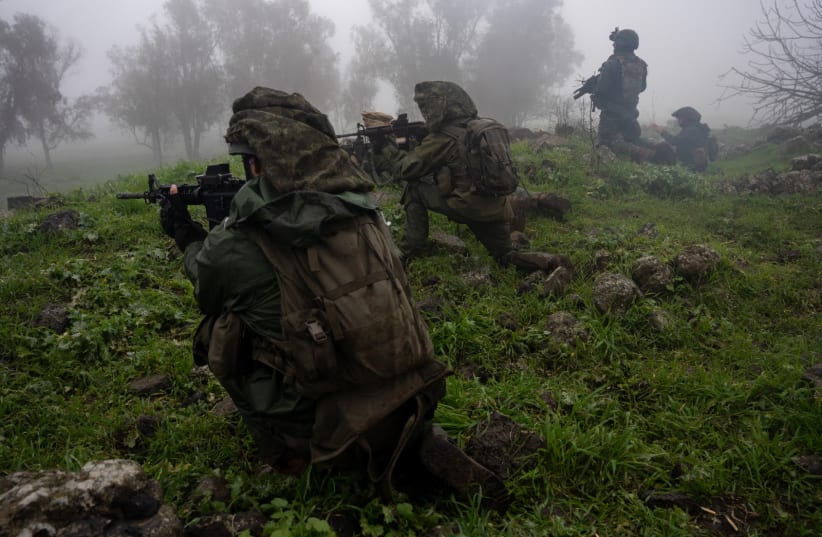As it has been for the last two weeks, it rained heavily yesterday at the Mahanyim intersection in the North. At the Route 90 hamburger stand, people came and went from the well-known local establishment. Snaking from Kiryat Shmona toward southern Galilee, Route 90 passes the Hula Valley, a gorgeous area that serves as a bird sanctuary framed by the Golan hills that stretch up toward Lebanon.
Nowadays, the area is often subject to rocket fire from the Iranian-backed terrorist group Hezbollah, based in Lebanon, while the Israeli communities close to the border have been evacuated for almost four months.
A sign along one of the hills reads “We are all hostages” in Hebrew, which makes you ask: In what ways are we hostage to this war? The North is hostage because its residents cannot reside hosting; instead, in the first few days of the war, some 300,000 reservists were called up. It is also hostage due to daily rocket and mortar fire from Lebanon, setting off sirens and alarming people who are still there.
Statements put out by officials are a mix of claims that security will be restored and that Hezbollah should not test Israel. Over the last month, they have run the gamut, from claims that the likelihood of war is high to assertions by Defense Minister Yoav Gallant on Sunday that “each attack in Lebanon advances us in changing the security situation on the northern border… We still haven’t used all our special capabilities. The noses of our planes are pointed North.”


Attempting to live a normal life
This tough talk appears in contrast to the situation on the ground, where people are trying to go about their normal lives as a winter storm batters the area.
On Monday, fog blanketed the mountains and hills of northern Galilee; the roads have checkpoints and there is not much traffic. Areas that might once have catered to tourism are badly affected, with residents frequently interviewed on Israeli media describing the difficulties of being evacuated or living under the clouds of war. They face uncertainty, and instability, having had to leave behind work or move children from one community to the next.
These hills are full of history, including that of previous wars. All around, there are old bunkers and forts, not only from the last 75 years but dating back thousands. Parts of that history are now so close to the border that they are in the evacuated areas. For instance, close to Jish, also known as Gush Halav, there is a church in the town, and beyond it, down the valley, is the Baram National Park, where an ancient synagogue is preserved. This is located around two kilometers from where sirens sounded on Monday in Yiron and Avivim on the border, indicating a Hezbollah threat.
A little further down from the border, in the Druze town of Hurfeish, a large poster at a central roundabout shows a fallen soldier. The Druze and Circassians in Galilee serve in the IDF and are outstanding and upstanding members of Israeli society; many of their towns are also threatened. The Circassian town of Rihaniya, for instance, is also located close to Yiron and Avivim.
Just below the mountains in Nahariya, sirens went off on Monday as well. Southeast from there, at one of the intersections, there is a giant chair, around 40 feet tall, that sits atop an old piece of green farm equipment. This represents an “empty” chair for the 136 remaining hostages still held in Gaza.
Like the sign on Route 90, the chair frames the access to the Northern border areas. We are in the North, and the hostages are held down south in Gaza, but the same war clouds threaten us all.
Hezbollah began its attacks on Israel on October 8, likely at the behest of Iran. Stories have circulated since, and continue to, about diplomatic attempts to get Hezbollah to perform some kind of token removal of its terrorist Radwan forces from near the border.
Just last year, Israel was told it had to sign a maritime deal with Lebanon – to reduce tensions with Hezbollah. Otherwise, it might attack Israel, the narrative went. One year later, Hezbollah began attacking Israel anyway and has paid no consequences in international condemnation.
Hezbollah launches rockets at Israel every day, more than 2,000 by mid-January, along with drones and anti-tank guided missiles, forcing 80,000 Israelis to evacuate and turning the North into areas forever blanketed with war clouds
The condemnations for Hezbollah aren’t loud enough. The terrorist group openly violates UN Resolution 1701 and suffers no consequences at the UN. It has suffered consequences from Israel in proportional responses, but the promise in October 2022 that the maritime deal would reduce tensions in the North did not pan out.
Instead, Israel gets endless attacks. Another diplomatic deal may be agreed upon, but driving around the North in the fog, clouds, and rain, one of many trips here since October 7, illustrates that although people want to return to normal, the region is still being blackmailed by Hezbollah, while the hostages remain captive in Gaza.
